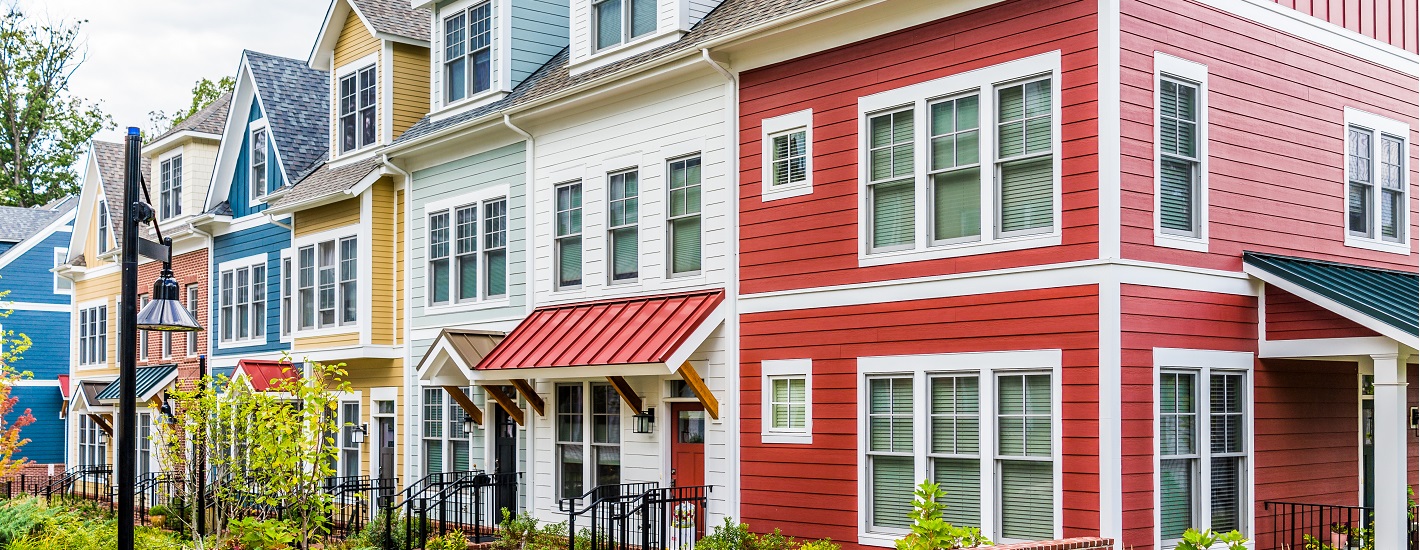Landlords and small business owners should know the newly enacted Inflation Reduction Act contains tax credits and depreciation benefits for owners of commercial property and residential rental property. As a Cleveland landlord, or small business owner, if you implement various types of renewable energy improvements, you can qualify for hefty tax credits or deductions. One caution: the rules are complex. That said, bear with the rules because the benefits are worthwhile.
Landlords: Business Energy Investment Tax Credit
The business energy investment tax credit (ITC) is used primarily for solar panel installations on commercial buildings and residential rentals. The ITC has been available and continues for small wind power installations, fuel cells, microturbine, waste energy recovery, geothermal, and combined heat and power. The new law extends the ITC to stand-alone battery storage, biogas (such as landfill gas), and microgrid controllers.
The new law retroactively increases the base ITC from 26 percent to 30 percent of depreciable basis for projects that are placed in service after 2021, provided that construction commences before 2025. For landlords to realize the full tax credit, you must continue to own the property for five years after the energy installation, or the government will recapture some or all of the credit.
Landlords: Low-Income Residential Projects
Qualified low-income residential building project bonus. You earn a 20 percent ITC bonus for solar or wind installations for residential buildings if (a) the building owner participates in various federal low-income housing programs, or (b) 50 percent of the affected building households have income of less than 200 percent of the federal poverty line or less than 80 percent of the area’s median gross income.
Landlords Special Depreciation Benefit.
The year you place your solar or other energy installation in service, you may depreciate it. Ordinarily, you reduce the basis of depreciable property by the full amount of any credit. But the ITC reduces the energy property’s basis by only half the credit amount, increasing your depreciation deductions.
Five-year depreciation. IRC Section 48 energy property gets a five-year depreciation period under MACRS (this is generous because solar panels usually last 25 to 30 years).
Bonus depreciation. Here’s more good news. The 80 percent first-year bonus depreciation is available for energy improvements for residential rental or commercial property placed in service during 2023; the depreciation is 60 percent for 2024. A benefit landlords will want to take advantage of.
Example. Sally is a landlord who owns a small commercial building in downtown Cleveland. She spends $50,000 to install solar panels in 2023. The project qualifies for the 10 percent domestic content bonus and the 10 percent low-income community bonus.
Sally’s total ITC is 50 percent. She gets a $25,000 ITC. The depreciable basis in her building is reduced by only 50 percent of her ITC, so her basis is $37,500. She uses 80 percent bonus depreciation to deduct $30,000 in 2023. She depreciates her remaining $7,500 basis over five years.
Can’t Use the ITC? Sell It
The ITC is non-refundable, but it is transferable. That is, you may transfer all or part of your ITC to another taxpayer for cash.
The buyer of your ITC need not be a business or be involved in the renewable energy industry (but the person or entity may not be related to you). The buyer must pay you for the ITC in cash. You are not taxed on the payment. It’s tax-exempt income for you.
- The credit must be transferred by the due date of the tax return for the taxable year in which the credit is determined. A credit may be transferred only once.
Replacement
The ITC in its current form expires in 2024. It will be replaced with a new, technology-neutral clean electricity ITC. Under the new credit, any project producing electricity will qualify for a 30 percent clean energy ITC if its greenhouse gas emissions rate is not greater than zero. The clean energy ITC will phase out by the later of 2032, or when the electric power sector emits 75 percent less carbon than 2022 levels.
Energy-Efficient Commercial Buildings Deduction
Since 2006, owners of commercial buildings have been able to claim an immediate first-year deduction for part of the cost of making existing or new buildings more energy-efficient. The Inflation Reduction Act significantly increases the amount of this deduction starting in 2023. Note that this is simply an accelerated tax deduction, not a tax credit.
Other Choices
Building owners can deduct many of these same expenses in one year using Section 179 expensing without having to comply with the complex rules for the Section 179D deduction. But there is an annual limit on the Section 179 deduction ($1,080,000 for 2022).
Bonus depreciation is also available to deduct many of these expenses in one year, but it will be reduced from 100 percent in 2022 to 80 percent in 2023 (and to 60 percent in 2024).
Landlords: Commercial and Multi-Family Only
The Section 179D deduction is only for commercial buildings and multi-family residential buildings of four stories or more. It is not available for rentals of single-family homes, multi‐family buildings of three stories or less, mobile homes, or manufactured homes.
- Building owners qualify for the deduction when, as part of a plan to reduce total energy costs, they upgrade a building’s
interior lighting system; - heating, cooling, ventilation, or hot water system; or
- building envelope—for example, roofs, walls, floors.
Old 50 Percent Rule
Under the old deduction, landlords and building owners had to improve a building’s energy efficiency by 50 percent as compared with a hypothetical reference building that meets an efficiency engineering standard established by the American Society of Heating, Refrigerating and Air-Conditioning Engineers (ASHRAE Standard 90.1).
New, Easier 25 Percent Rule
Under the revised deduction, building owners only have to improve energy efficiency by a minimum of 25 percent. And the maximum deduction amount increases for every percentage point of energy efficiency above the 25 percent benchmark.
Old Deduction
The old deduction was capped at $1.88 per building square foot in 2022.
New Deduction
Starting in 2023, the deduction cap is increased to $5 per building square foot (subject to annual inflation adjustments). But to claim the $5-per-squarefoot deduction, building owners must comply with prevailing wage and apprenticeship requirements. If those requirements are not met, a building owner may claim only a $1-per-square-foot maximum deduction.
Prevailing Wage Rules
The prevailing wage rules require that any laborers and mechanics employed by the taxpayer, contractors, and subcontractors be paid prevailing wages (as determined by the Department of Labor19) during installation, alteration, or repair of the project.
The apprenticeship rules require that qualified apprentices be hired to perform a minimum percentage of the work on the project, as follows:
- 10 percent in 2022
- 12.5 percent in 2023
- 15 percent in 2024 and later
Failure to satisfy these requirements can be cured by making payments to each worker previously paid below the prevailing wage and remitting penalty payments to the IRS. The IRS will issue guidance on how these requirements will work in practice. Projects that begin construction within 60 days after the IRS publishes such guidance are not subject to the prevailing wage and apprenticeship requirements.
Inspection
To obtain the Section 179D deduction, the building must be inspected by a “qualified individual” who certifies to the IRS that you’ve complied with all the requirements. You’ll likely need to hire a heating and ventilating engineer, refrigeration engineer, illuminating engineer, or other similar expert to get this deduction. You should do this before undertaking an energy-efficiency retrofit project.
Defined Building Designers Can Claim the Deduction
One unique aspect of the Section 179D deduction is that designers of government buildings have been able to claim it. The Inflation Reduction Act extends this deduction to designers of buildings for any tax-exempt entity, including Indian tribal governments, churches and other religious organizations, and not-for-profit schools and universities. The entity must allocate the deduction to the designer. For these purposes, designers include architects, engineers, design-build contractors, and performance contractors.
Electric Vehicle Charger Credit
The Inflation Reduction Act extends through 2032 the tax credit for installing an electric vehicle charging station in a commercial or rental building garage or parking lot. Prevailing Wage Rules Apply Here Too Starting in 2023, the credit remains 30 percent of the cost of installing such chargers, but only if the project complies with prevailing wage and apprenticeship requirements (these are the same requirements discussed above). If the project does not comply with these requirements, the law reduces the credit from 30 percent to 6 percent. The maximum annual credit is now capped at $100,000, and the cap applies per charger unit. Under prior law, there was a $30,000 annual cap for an entire location regardless of the number of chargers.
The credit is also extended to include bi-directional chargers that can be used to power a home and feed energy back into the electricity grid. The credit now also applies to chargers for two- and three-wheeled vehicles.
New Geographic Requirement for Electric Charger Credit
The electric charger credit is subject to a new geographic requirement that will greatly limit its availability. Starting in 2023, it will be available only for property located in low-income or rural areas. Low-income census tract. The charging station must be located in a low-income census tract that has a poverty rate of at least 20 percent or a median family income of less than 80 percent of the statewide median. Rural area. Alternatively, the charging station must be in a non-urban area. This is an area not designated as an urban area by the U.S. Commerce Department in the most recent census. Less than 20 percent of the U.S. population lives in such rural areas. General Business Credit The electric vehicle charger credit is part of the general business credit. The basis of the property for which a credit is claimed must be reduced by the amount of the credit.
Summary:
- The Inflation Reduction Act extends and expands business ITCs for installing solar and other renewable energy facilities in commercial and rental buildings. The new law retroactively increases the ITC from 26 percent to 30 percent for projects begun after 2021 and before 2025.
- Starting in 2023, you can earn bonus credits giving you 40 percent, 50 percent, or more in ITC. You earn the bonus credits for projects that comply with domestic content requirements, are located in low-income communities, participate in federal housing programs, or are located in communities involved with fossil fuels.
- The ITC in its current form expires in 2025, to be replaced with a new technology-neutral, 30 percent clean electricity ITC.
- The Energy Efficient Commercial Buildings Deduction can now be obtained for projects that increase a building’s energy efficiency by 25 percent instead of 50 percent.
- Starting in 2023, the cap on the deduction is increased to $5 per building square foot if prevailing wage and apprenticeship
requirements are met. If these requirements are not met, a building owner may claim only a $1-per-square-foot maximum deduction. - The credit for installing electric vehicle charger units in commercial or rental buildings is extended to 2032. Starting in 2023, the following rules govern:
- The 30 percent credit is available only for projects that comply with prevailing wage and apprenticeship rules; otherwise, it is reduced to 6 percent.
- The credit is available only for property located in low-income or rural areas.
- The annual cap on the credit is increased to $100,000 per charging unit.
Contact Us
- If you have back taxes and want to know the timeline and/or costs to get your back taxes resolved
- If you own a small business and want to discuss tax reduction strategies for the self-employed
- If you’re worried your last tax expert wasn’t doing the best they could have and want a second opinion…
Contact Ken Weinberg to set up a free consultation by filling out the form on this page.




